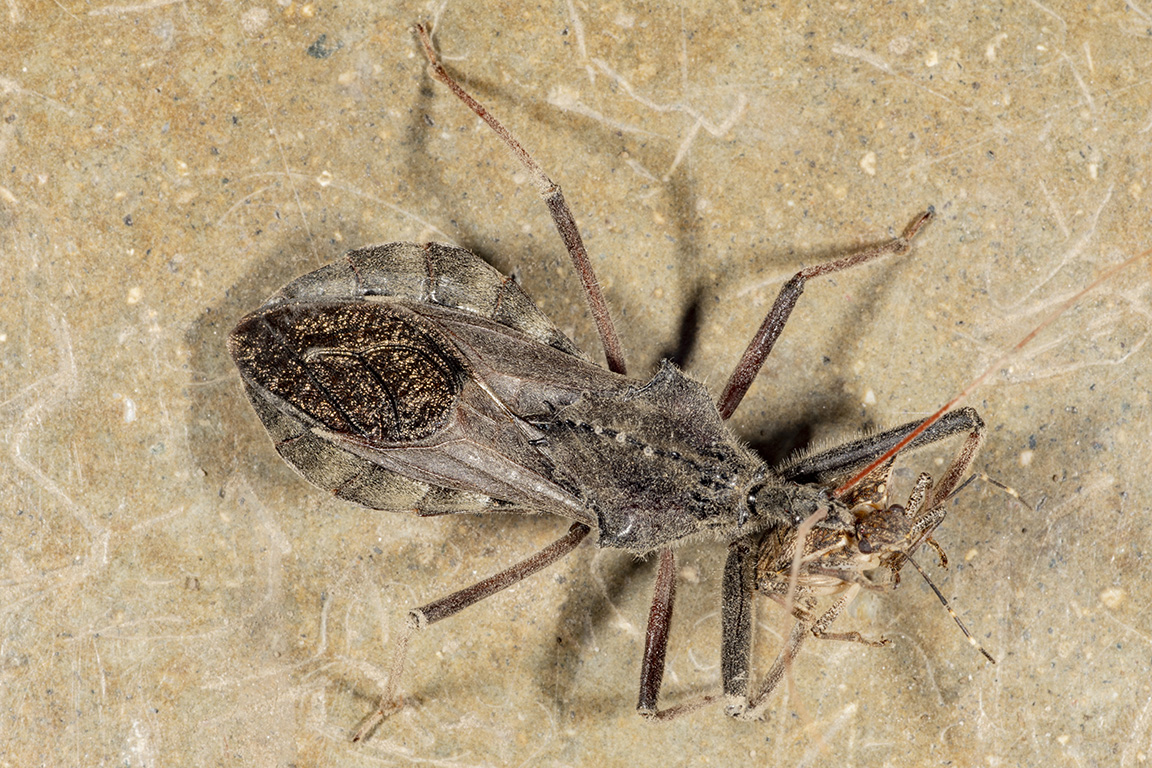This season’s extended fall has allowed many plants and insects remain growing and active. Although, I don’t appreciate the Asian lady beetles and boxelder bugs congregating on my white, sided house to find entry for the winter. However, one awesome sight is the wheel bug on the hunt for one last meal before the freeze.
The wheel bug, Arilus cristatus, are predators of other insects. Both the immature (nymph) and adults lurk among foliage and flowers waiting for unsuspecting prey. Their straw-like mouthpart is jabbed into their victim, then they suck out the body fluids. Though that sound cruel, it is a good thing for us, so leave them be and let them do their job! Another good reason to leave them alone is that if disturbed, they can probe you! Likely, any wheel bugs you encounter have already laid their eggs for over-wintering, then you might find their nymphs next season.
Happy scouting!

Adult wheel bug (note the “cog” like structure) sucking the life out of a Japanese beetle in soybean. (Photo Credit: John Obermeyer)

Wheel bug from above feeding on a brown marmorated stink bug…good riddance! (Photo Credit: John Obermeyer)



